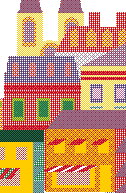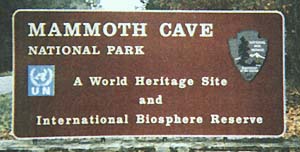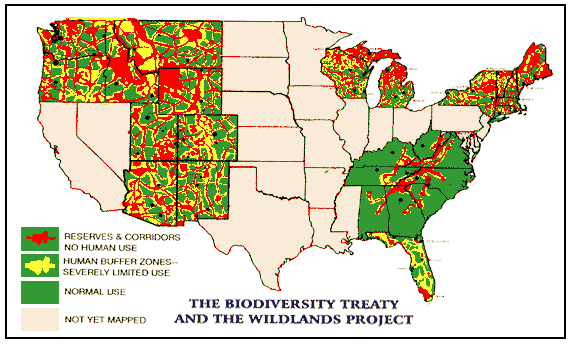Where Did the Concept Originate?
By Milton H. Baxley II

| Sustainable Communities
Where Did the Concept Originate? By Milton H. Baxley II |
 |
On May 31, 1997, an article appeared in the Guest Column of The Gainesville Sun newspaper by Mr. Warren Nielson, President of Sustainable Alachua County, Inc. entitled " In The Spirit of Sustainability." The article stated the "Sustainable Alachua County, or SAC, is a citizen's movement representing a wide spectrum of interests .... As one might expect, the organizational process of this grass-roots enterprise has indeed been clumsy, slow and sometimes stressful ... Alachua County Commissioner Leveda Brown and Gainesville City Commissioner Pegeen Hanrahan have invited all elected officials, charter officers, and governmental staff within Alachua Countly to a public policy forum the evening of June 19 on the campus of Santa Fe Community College."
It appears that the only accurate part of Mr. Nielsen's quoted statement is that Leveda Brown and Pegeen Hanrahan did invite public officials and staff to a meeting at Santa Fe Community College on June 19, 1997. However, the facts are that Sustainable Alachua County is not a citizen's movement, nor is it a grass-roots enterprise, by any stretch of the imagination. The organization process has not been slow or clumsy, but was well planned, organized, orchestrated and presented with the skill, cunningness, and lightning speed of the sneak attack on Pearl Harbor. The announced meeting at Santa Fe Community College, on June 19, 1997, was not a public policy forum, since no one representing the general public was allowed to ask questions or offer any comments concerning their views on sustainable communities and sustainable development.
Following the meeting, several persons in attendance, who were denied participation by the facilitator, Mr. Herb Marlow, approached certain city and county commissioners to inquire whether they were knowlegable about where the idea or concept of sustainable communities originated. Without exception, the commissioners claimed not to know the answer, but were under the impression that it was locally concieved. It is difficult to understand why any public official would lend support to, or participate in promoting a sustainable communities program, without first doing research to determine who or what is behind it. Nevertheless, it is only fair to give the commissioners the benefit of the doubt until they have been fully and adequately informed. One of the commisssioners, who shall remain nameless, for the moment, was asked whether the sustainable community project would ultimately result in banning the use of air-conditioning in homes and businesses, and whether the use of automobiles inside sustainable communities would be prohibited. Surprisingly, the response was not a denial, but rather that the commissioner had lived without air-conditioning before, and could do so again in the future. The commissioner did not deny that the use of automobiles might be prohibited inside sustainable communities, but acknowledged that such prohibition is possible.
Another elected official, not a city or county commissioner,
expressed a disbelief in the suggestion that the United Nations has any
connection to the sustainable development or sustainable communities program.
The fact is that the concept of sustainable development originated with
the United Nations many years ago. It is not a new idea that was just
conceived by someone in Alachua County.


In 1993, President Bill Clinton signed Executive Order #12852, establishing the President's Council On Sustainable Development. Approximately two and one-half years later, the President's Council published a report entiled "Sustainable America: A New Consensus for Prosperity, Opportunity, and a Healthy Environment for the Future." On September 27, 1994, Florida's Governor, Lawton Chiles, signed Executive Order 94-54, creating the Governor's Commission for a Sustainable South Florida. In 1996, the Florida Legislature passed Section 163.3244, Florida Statutes (Sustainable Community Demonstration Project) which authorized the designation of five sustainable communities in Florida, three of which had to be located in South Florida. Both the city of Gainesville and the city of Ocala submitted applications to the Department of Community Affairs, in Tallahassee, seeking to be designated as one of the five sustainable communities. Ocala was the successful applicant, much to the dismay of the Gainesville City Commission. After much negotiating, the city of Ocala finally signed an agreement with the Florida Department of Community Affairs, and officially became a sustainable community. The fact that Gainesville did not "win" the designation had no effect on certain proponents proceeding with their planned agenda to force the sustainable community concept on the people of Alachua County.
In order for the United Nations Agenda 21 plan to succeed, sustainable communities must be uniformly established in all cities or counties throughout the United States of America, and every other country in the world. This is by no means a local project, but has global implications.

![]() Back
to Citizens for Better Government
Back
to Citizens for Better Government
Last Update August 26, 1997